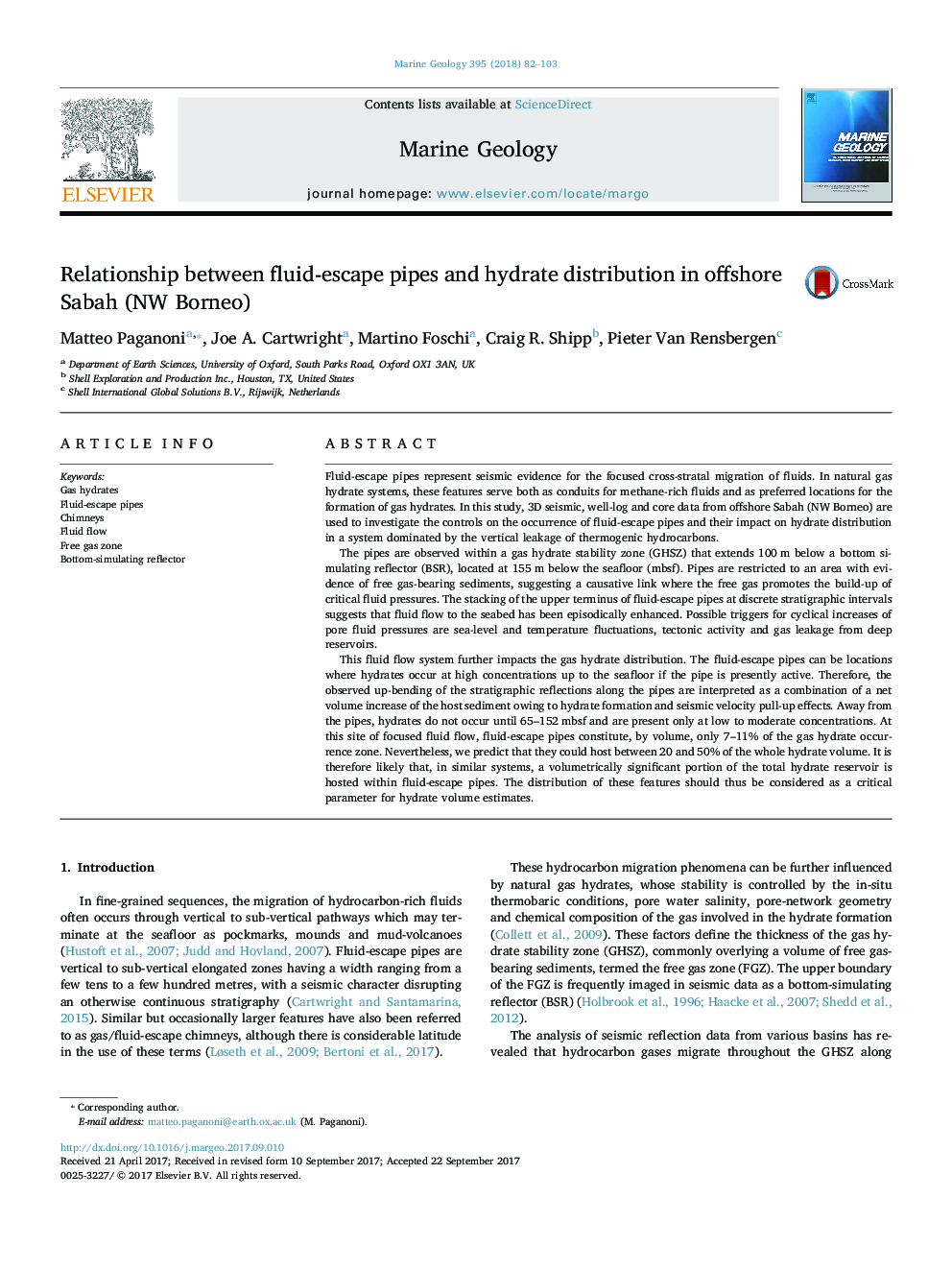| Article ID | Journal | Published Year | Pages | File Type |
|---|---|---|---|---|
| 5784439 | Marine Geology | 2018 | 22 Pages |
Abstract
This fluid flow system further impacts the gas hydrate distribution. The fluid-escape pipes can be locations where hydrates occur at high concentrations up to the seafloor if the pipe is presently active. Therefore, the observed up-bending of the stratigraphic reflections along the pipes are interpreted as a combination of a net volume increase of the host sediment owing to hydrate formation and seismic velocity pull-up effects. Away from the pipes, hydrates do not occur until 65-152Â mbsf and are present only at low to moderate concentrations. At this site of focused fluid flow, fluid-escape pipes constitute, by volume, only 7-11% of the gas hydrate occurrence zone. Nevertheless, we predict that they could host between 20 and 50% of the whole hydrate volume. It is therefore likely that, in similar systems, a volumetrically significant portion of the total hydrate reservoir is hosted within fluid-escape pipes. The distribution of these features should thus be considered as a critical parameter for hydrate volume estimates.
Related Topics
Physical Sciences and Engineering
Earth and Planetary Sciences
Geochemistry and Petrology
Authors
Matteo Paganoni, Joe A. Cartwright, Martino Foschi, Craig R. Shipp, Pieter Van Rensbergen,
